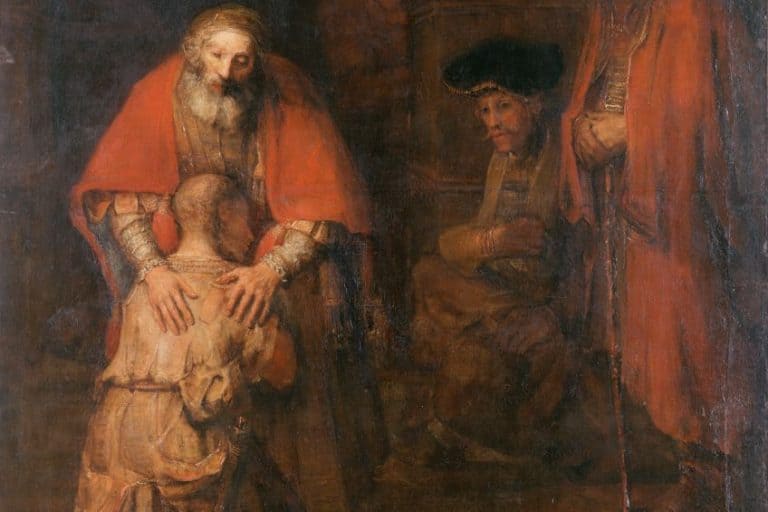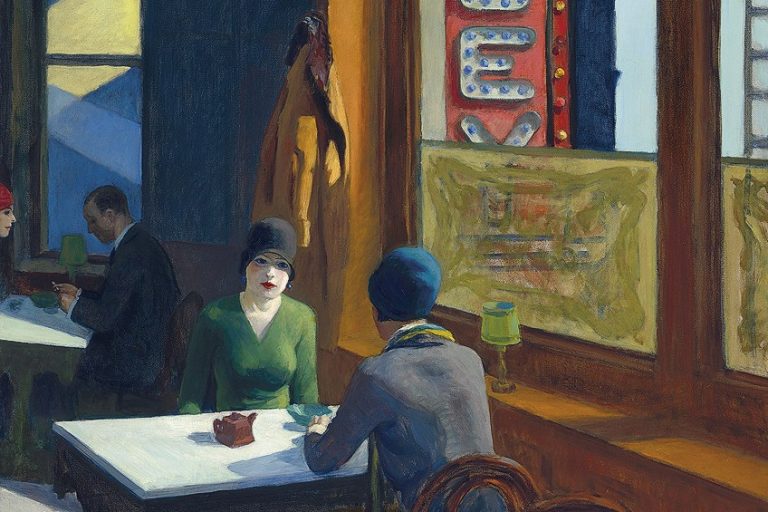“Freedom of Speech” by Norman Rockwell – An Analysis
In Norman Rockwell’s enduring masterpiece, Freedom of Speech, the artist encapsulates the essence of a democratic society at the crossroads of individual expression and communal dialogue. Through Rockwell’s meticulous attention to detail and poignant narrative composition, the painting transcends its static form to become a poignant reflection of American ideals. As we embark on an analysis of this iconic work, we delve into Rockwell’s profound exploration of the complexities surrounding freedom of speech, inviting discourse on its implications in both art and society.
Key Takeaways
- Norman Rockwell’s painting accentuates the fundamental American right to ‘Freedom of Speech.’
- First published in The Saturday Evening Post in 1943, it is part of the influential Four Freedoms series.
- The series helped to define and promote the values of American democracy during World War II.
The Inspiration Behind Freedom of Speech
| Artist | Norman Rockwell (1894 – 1978) |
| Date Created | 1943 |
| Medium | Oil on canvas |
| Genre | Social Realism |
| Period/Movement | 20th-century American art |
| Dimensions (cm) | 116.2 x 90 |
| Series/Versions | N/A |
| Where Is It Housed? | Norman Rockwell Museum, Stockbridge, Massachusetts, United States |
| What It Is Worth | Estimated to be priceless, in terms of cultural and historical value |
Norman Rockwell’s Freedom of Speech is a seminal work in American art, capturing the essence of one of the most fundamental rights valued in the country. Completed in 1943, this painting stands as the first of Rockwell’s iconic Four Freedoms series. Each painting exemplifies one of the freedoms outlined in President Franklin D. Roosevelt’s 1941 State of the Union address. In Freedom of Speech, Rockwell portrays an everyday American taking a stand, underpinning the collective importance of each individual’s right to voice their opinion without fear of repercussion.
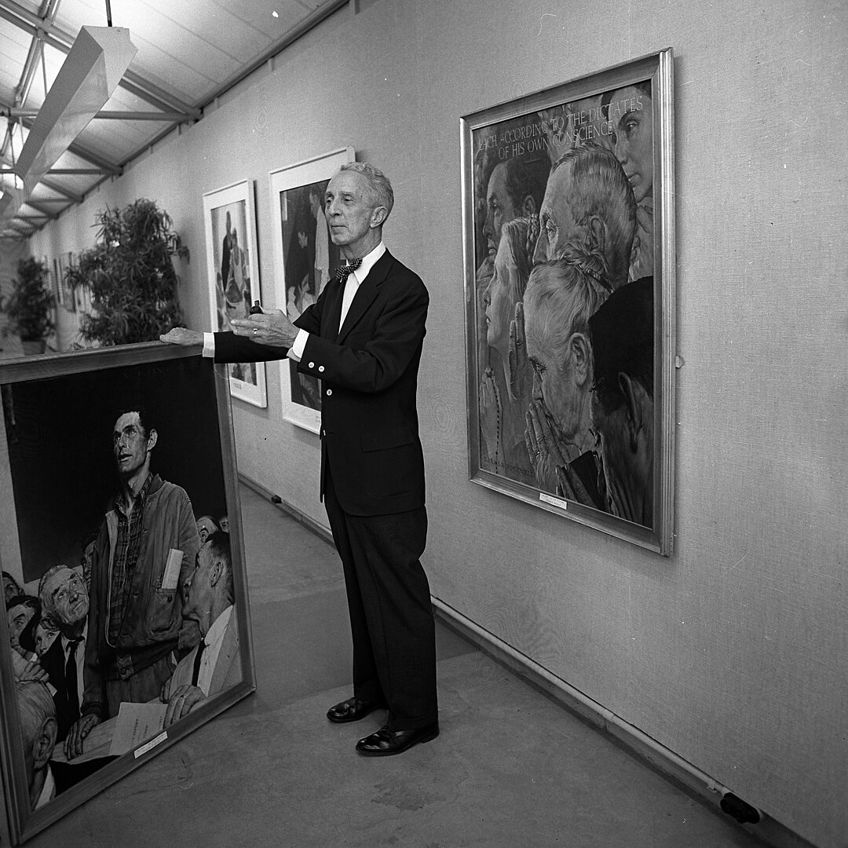
The painting was originally published in The Saturday Evening Post, alongside a matching essay, wielding a significant impact on its audience at a time when the country was entrenched in the throes of World War II. Rockwell’s tangible, relatable imagery brought the abstract principles of American democracy into clear focus for millions of readers.
The art not only reflected the values of the nation but also reinforced the idea of these freedoms being a part of everyday life for every citizen.
Historical Context and Influence
On January 6, 1941, President Franklin D. Roosevelt delivered his State of the Union Address, which would become known as the “Four Freedoms” speech. It was a time of great uncertainty, with World War II ongoing. Roosevelt’s address emphasized common values and sought to justify America’s impending involvement in the conflict. He introduced the “Four Freedoms,” which were freedom of speech, freedom of worship, freedom from want, and freedom from fear. This vision was solidified in the Atlantic Charter, reinforcing the two nations’ principles for a post-war world.
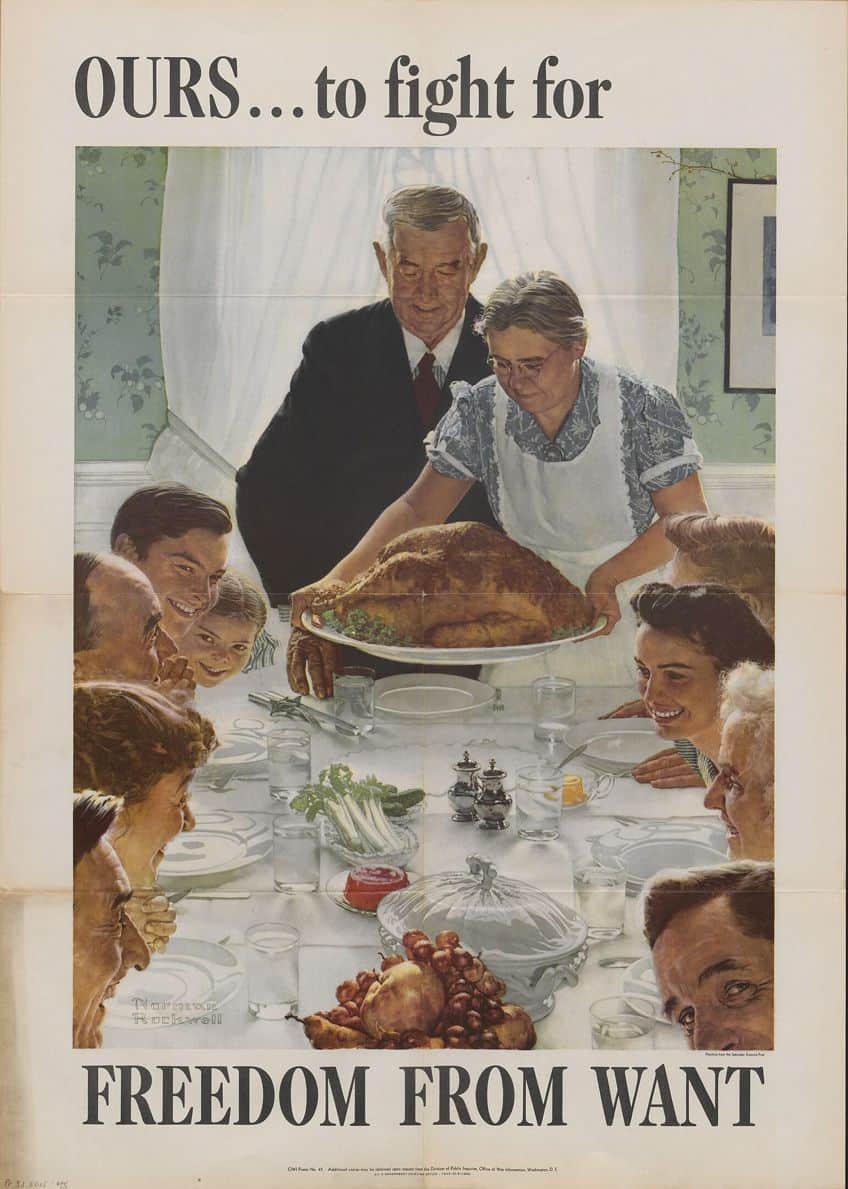
Norman Rockwell’s Process and Technique
Norman Rockwell, renowned for capturing the essence of American life, used oil on canvas to bring Roosevelt’s principle of freedom of speech to life. He portrayed ordinary Vermont neighbors engaged in a town meeting, a scene that underscored the ability to speak one’s mind without fear. The image was so powerful that it accompanied an essay by Booth Tarkington in the February 20, 1943, issue of The Saturday Evening Post.
Rockwell’s technique involved studying his community and friends to portray authentic and relatable American scenes that resonated with the public.
Formal Analysis
Freedom of Speech by Norman Rockwell is a vivid and detailed painting that reflects a moment of democratic expression. This section examines the artwork in terms of its subject matter and the symbolism ingrained within its composition.

Subject Matter
The painting depicts a man standing up during a public meeting to give a speech. He, surrounded by his peers, is the focal point as all eyes are upon him. Rockwell portrays him in a plain brown jacket and blue denim shirt, emphasizing his working-class status. The setting is informal, evident by the various attendees who are wearing everyday clothing.
This suggests that the scene occurs within a local community event or town meeting.
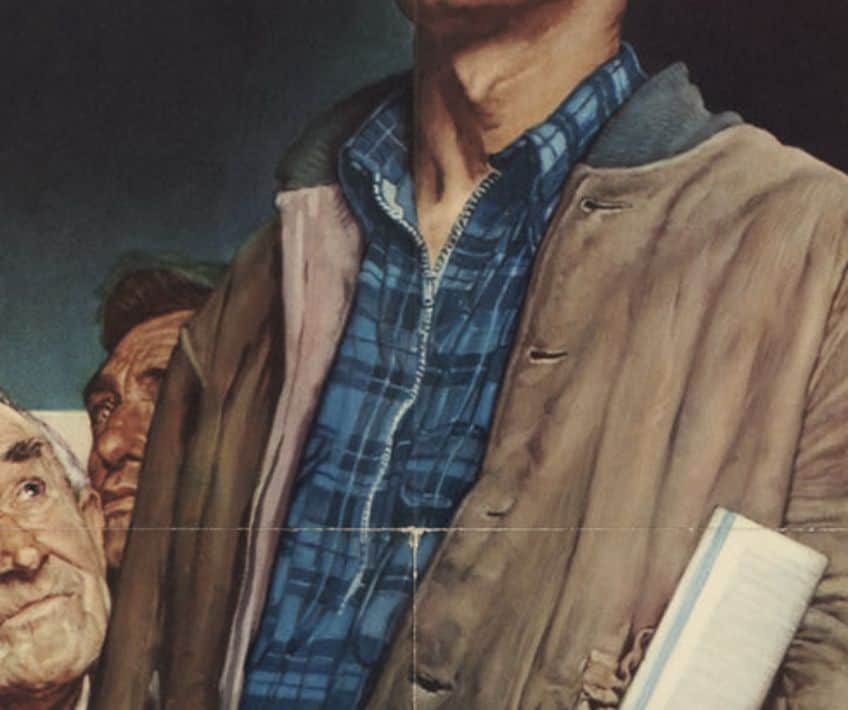
Symbolism
Freedom of Speech by Norman Rockwell embodies the essence of American democratic ideals through its rich symbolism. At the heart of the painting is the town meeting, serving as a symbol of civic engagement and collective decision-making. The ordinary citizen, bravely raising his hand to speak among his peers, represents the power of individual voices in shaping societal discourse. His raised hand signifies courage and assertiveness in advocating for personal beliefs, despite potential opposition.
Surrounding him, the diverse expressions and body language of the townspeople reflect a spectrum of opinions and perspectives, highlighting the dynamic nature of public dialogue.
Despite this diversity, there is a palpable sense of unity and mutual respect among the community members, underscoring their shared commitment to democratic principles and the importance of open debate. Freedom of Speech thus serves as a timeless reminder of the foundational values of democracy and the ongoing struggle to uphold the right to free expression.

Critical Reception and Public Impact
Norman Rockwell’s Freedom of Speech garnered substantial attention for encapsulating American values during a pivotal time in history. The painting’s influence extended beyond art, impacting war efforts and embodying the spirit of freedom. When Freedom of Speech was published in The Saturday Evening Post on February 20, 1943, it was met with widespread acclaim. The image became emblematic of the democratic principles touted by President Franklin D. Roosevelt.
Ben Hibbs, the editor of the magazine at the time, recognized the profound effect that the illustration had on the public, as it resonated deeply with American citizens and their commitment to freedom of expression.
Contribution to War Effort and Propaganda
During the Second War Bond Drive, Rockwell’s painting played a critical role in galvanizing the public. The image was reproduced in poster form to encourage the purchase of war bonds, becoming a significant aspect of America’s wartime propaganda efforts. Rockwell’s depictions, including Freedom of Speech, were instrumental in rallying the American spirit, much like the iconic Rosie the Riveter.

Legacy in American Art and Freedom
Rockwell’s Freedom of Speech has maintained a lasting influence on American art and remains an important cultural artifact in American history. It laid the groundwork for future art that seeks to interpret and express societal values. The piece and its siblings—Freedom from Want, Freedom from Fear, and Freedom of Worship—have been credited with helping to shape the narrative that led to the creation of the Charter of the United Nations.
As such, they hold a place not only in the realm of American art but in the unfolding history of global human rights.
Exhibition and Preservation
The works of Norman Rockwell, particularly Freedom of Speech, hold a significant place in American art history. The Norman Rockwell Museum in Stockbridge, MA, serves as a primary custodian of Rockwell’s legacy. With a mission to preserve and exhibit his art, the museum is instrumental in circulating his works, including the iconic Freedom of Speech, for public viewing and scholarly research.
Rockwell’s Freedom of Speech has been showcased in exhibitions like “Norman Rockwell: Imagining Freedom,” which toured nationally, emphasizing the importance of the Four Freedoms. Preservation efforts involve careful handling and maintenance to maintain the works’ longevity, following rigorous conservation protocols.
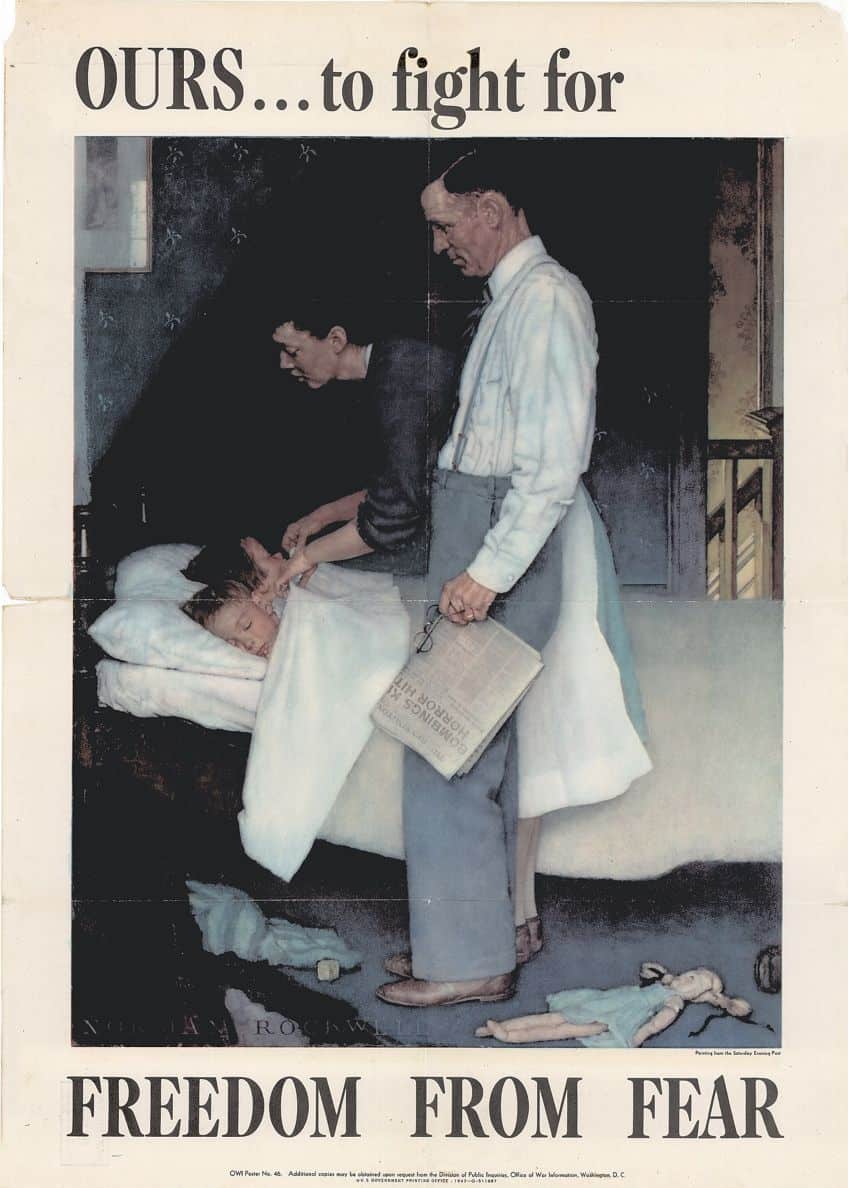
Occasionally, pieces like Freedom of Speech are loaned to institutions like the Smithsonian and the Michener Art Museum for special exhibitions, contributing to their preservation and exposure. Public access initiatives, championed by figures like Bruce Cole and John Updike, ensure that Rockwell’s art continues to inspire dialogue about American freedoms.
The Norman Rockwell Museum remains steadfast in its commitment to safeguarding Rockwell’s art.
By featuring his works on benches and in educational programs, they continue to engage diverse audiences. Notably, American artist Jim Martin has contributed to the museum’s educational outreach, furthering the exhibit’s reach. These collective endeavors underscore the dedication to the exhibition and preservation of Norman Rockwell’s Freedom of Speech.
Norman Rockwell’s Freedom of Speech stands as a timeless testament to the essence of democracy and the enduring importance of free expression. Through its rich symbolism and evocative imagery, the painting invites viewers to contemplate the power of individual voices within the collective fabric of society. As we reflect on the diverse perspectives and unified spirit depicted within the scene of the town meeting, we are reminded of the ongoing struggle to uphold and defend the fundamental right to freedom of speech. Rockwell’s masterpiece serves as a poignant reminder of the role that art plays in stimulating dialogue, fostering understanding, and inspiring positive social change. As we continue to navigate the complexities of our modern world, Freedom of Speech remains a beacon of hope, encouraging us to embrace the diversity of thought and uphold the principles of democracy for generations to come.
Frequently Asked Questions
What Is the Meaning Behind Norman Rockwell’s Freedom of Speech Painting?
Freedom of Speech embodies the right every American has to speak their mind without fear, a principle outlined by President Franklin D. Roosevelt in his 1941 State of the Union Address. Rockwell’s piece shows a man standing amongst his peers, freely expressing his views—a visual representation of democratic discourse and one of the fundamental American ideals.
How Has the Freedom of Speech Painting Been Used in Popular Culture and Memes?
Over time, Freedom of Speech has transcended its original medium, becoming a referential image in popular culture and the digital world. It has appeared in various adaptations, including posters and stamps, and has inspired memes that aim to highlight or critique current social and political issues. These adaptations often retain the core message of the painting while providing contemporary context.
Isabella studied at the University of Cape Town in South Africa and graduated with a Bachelor of Arts majoring in English Literature & Language and Psychology. Throughout her undergraduate years, she took Art History as an additional subject and absolutely loved it. Building on from her art history knowledge that began in high school, art has always been a particular area of fascination for her. From learning about artworks previously unknown to her, or sharpening her existing understanding of specific works, the ability to continue learning within this interesting sphere excites her greatly.
Her focal points of interest in art history encompass profiling specific artists and art movements, as it is these areas where she is able to really dig deep into the rich narrative of the art world. Additionally, she particularly enjoys exploring the different artistic styles of the 20th century, as well as the important impact that female artists have had on the development of art history.
Learn more about Isabella Meyer and the Art in Context Team.
Cite this Article
Isabella, Meyer, ““Freedom of Speech” by Norman Rockwell – An Analysis.” Art in Context. February 23, 2024. URL: https://artincontext.org/freedom-of-speech-by-norman-rockwell/
Meyer, I. (2024, 23 February). “Freedom of Speech” by Norman Rockwell – An Analysis. Art in Context. https://artincontext.org/freedom-of-speech-by-norman-rockwell/
Meyer, Isabella. ““Freedom of Speech” by Norman Rockwell – An Analysis.” Art in Context, February 23, 2024. https://artincontext.org/freedom-of-speech-by-norman-rockwell/.







